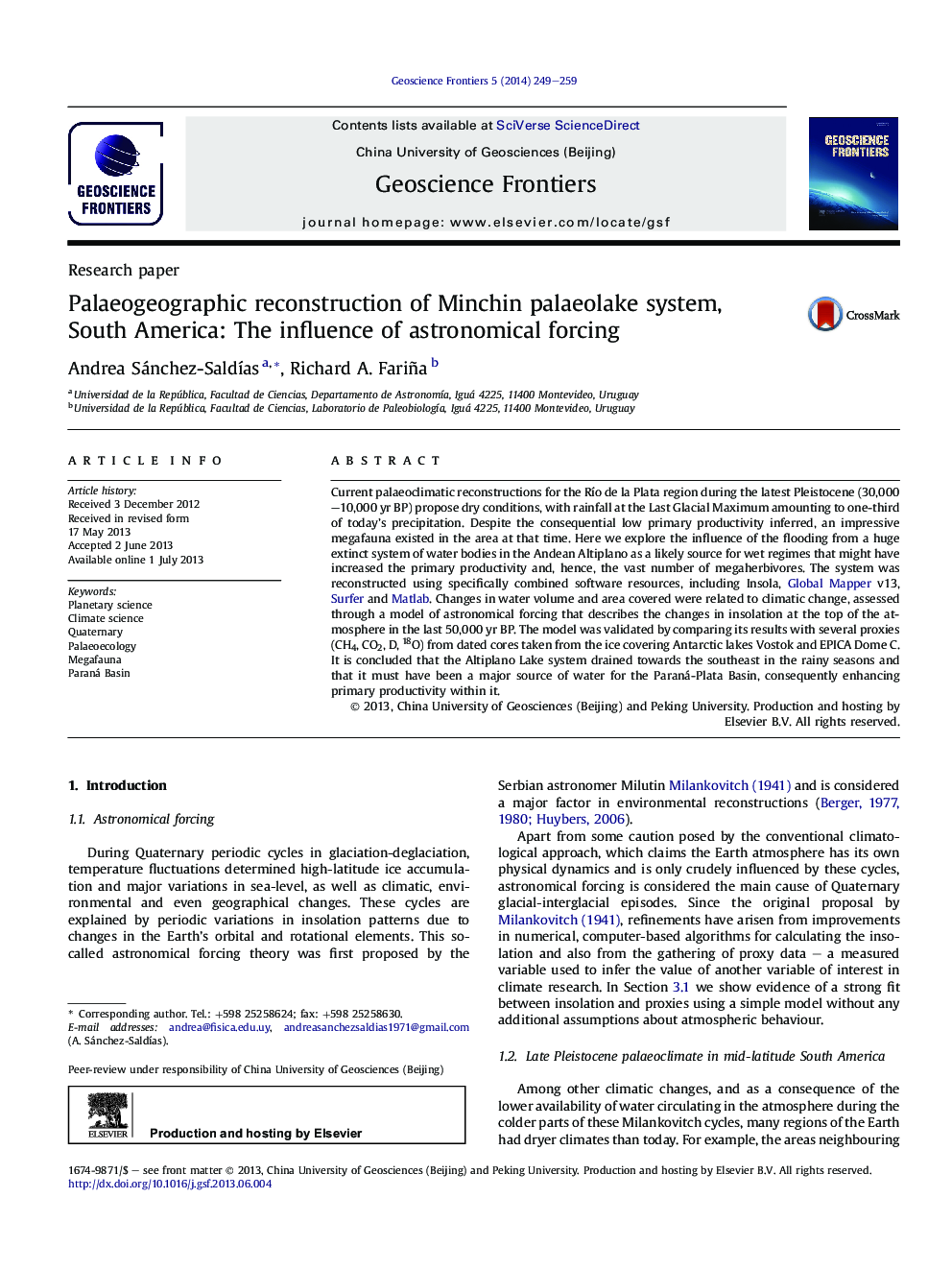| Article ID | Journal | Published Year | Pages | File Type |
|---|---|---|---|---|
| 4681796 | Geoscience Frontiers | 2014 | 11 Pages |
•Pleistocene topography and climate of Altiplano palaeolakes are reconstructed.•The system drainage is proposed to have taken place towards the Southeast.•The floodings increased the primary productivity in the Río de la Plata area.
Current palaeoclimatic reconstructions for the Río de la Plata region during the latest Pleistocene (30,000–10,000 yr BP) propose dry conditions, with rainfall at the Last Glacial Maximum amounting to one-third of today's precipitation. Despite the consequential low primary productivity inferred, an impressive megafauna existed in the area at that time. Here we explore the influence of the flooding from a huge extinct system of water bodies in the Andean Altiplano as a likely source for wet regimes that might have increased the primary productivity and, hence, the vast number of megaherbivores. The system was reconstructed using specifically combined software resources, including Insola, Global Mapper v13, Surfer and Matlab. Changes in water volume and area covered were related to climatic change, assessed through a model of astronomical forcing that describes the changes in insolation at the top of the atmosphere in the last 50,000 yr BP. The model was validated by comparing its results with several proxies (CH4, CO2, D, 18O) from dated cores taken from the ice covering Antarctic lakes Vostok and EPICA Dome C. It is concluded that the Altiplano Lake system drained towards the southeast in the rainy seasons and that it must have been a major source of water for the Paraná-Plata Basin, consequently enhancing primary productivity within it.
Graphical abstractFigure optionsDownload full-size imageDownload as PowerPoint slide
